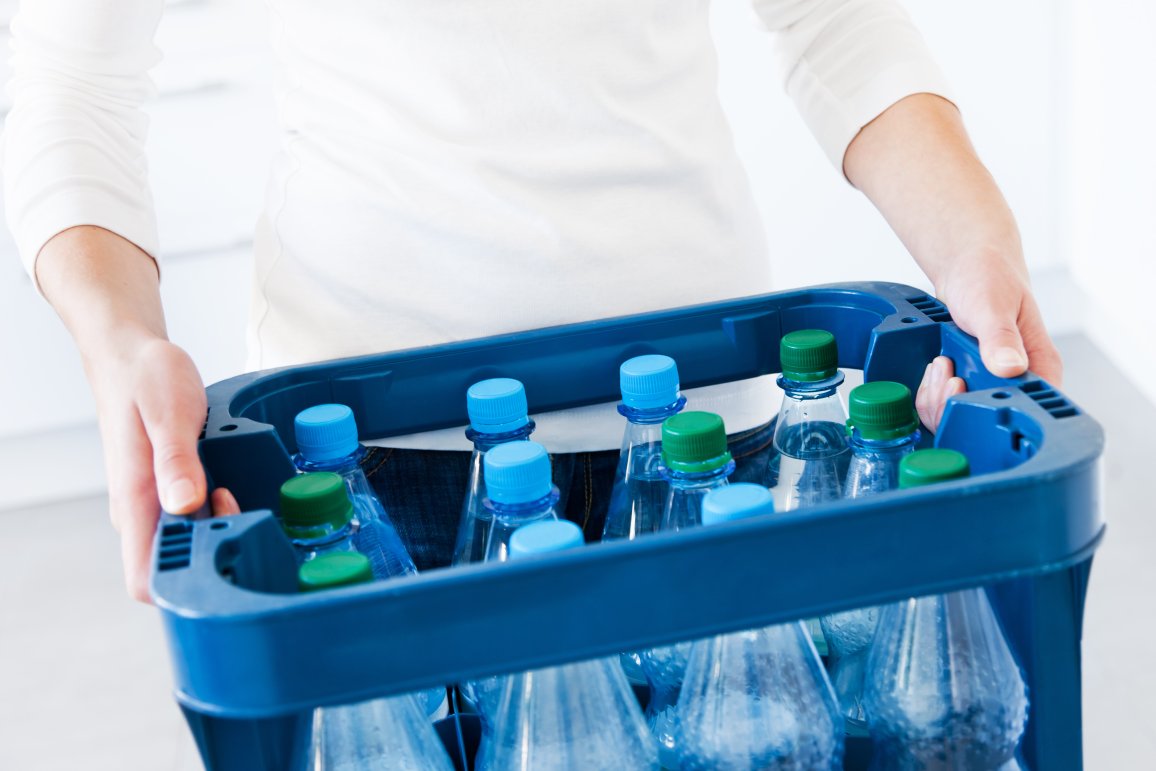A clean and sustainable option – Re-using bottles over and over again
Anyone who uses reusable plastic bottles is being environmentally friendly. After all, the bottles have a good ecological balance thanks to their low weight and ability to be refilled. However, they can only be reused if they are in good condition. To achieve this, we consumers can do our part, such as preventing damage, contamination, and impurities to the bottles. The same applies to reusable glass bottles.

Reusable plastic bottles are sustainable. But used bottles need to be returned undamaged and clean – only then can they be reused.
Clean Returns Only - end consumers are asked to play their part
Only undamaged and cleanly returned plastic bottles are suitable for reuse. These will be washed and refilled. Damaged, dirty and contaminated bottles, on the other hand, have to be sorted out and disposed of separately – which significantly worsens the good ecological balance. So to ensure that reusable bottles really remain an advantage, end consumers are asked to play their part - this applies to both reusable PET and glass bottles.
Think about functionality, hygiene and the environment
The reusable system is based on a pure cycle. Pure, because only used materials are reused. And if possible, the bottles should also remain as pure as possible – as in ‘clean’. That’s why empty reusable bottles should not be used as makeshift containers or waste bins. Neither should ashes or whole cigarette butts end up in there; nor should labels be scratched off. Filling them with hazardous liquids is particularly taboo – cleaning agents, solvents and diluents, for example, contaminate the bottles and damage their material, making them completely useless for recycling.
Fill water bottles only with water
Even though it may be tempting to use the convenient and lightweight reusable bottles for things like soft drinks or dietary supplements in daily life, it is an absolute taboo. Controls in the bottling plants detect and remove water bottles that have been used for other purposes since they absorb the smell of other liquids and cannot be completely cleaned. About two percent of reusable bottles are sorted out and disposed of due to such foreign odors. However, if only water is filled into the bottle, there are no issues. The bottle remains tasteless and odorless, and it can continue to be used in the sustainable reusable system.
Do not damage bottles
Damaged bottles also have to be taken out of the recycling cycle. Damage includes cracks in the bottle wall, holes in the bottom of the bottle and a broken thread on the bottle top. Drawing on bottles with a felt-tip pen or putting stickers on them may also be knock-out criteria for their further use. Fortunately, inspectors and fine sensor noses in the bottler’s cleaning plants detect all damage and unsuitable substances and dispose of the bottles, thus protecting our health.
Revise your opinion and rethink your own actions
But it doesn’t have to come to that. Individual end consumers can play their part when it comes to these reusable products. Everyone benefits from handling reusable plastic bottles properly – those who enjoy the beverages and our environment too. Using plastic responsibly and recycling it extensively makes it more sustainable than other packaging. We are giving nine more facts about debunking the myth of the evil PET bottle.
(Author: Claudia Wörner, yes or no.)
Do you like our texts? Perhaps even so much that you want to use them in your own media? Then please get in touch with us beforehand!
